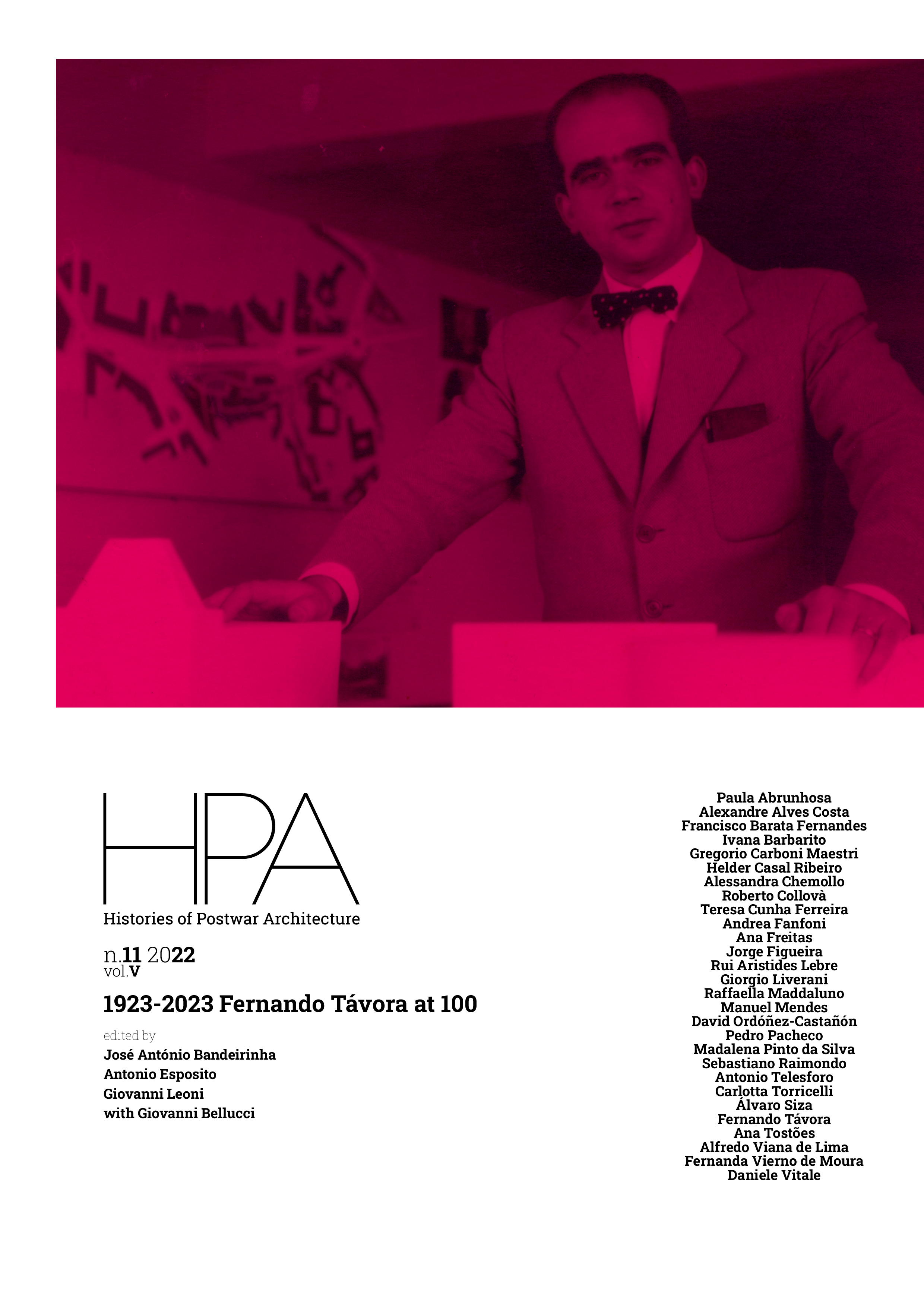In the Interior of Time. Constants and Contrasts
DOI:
https://doi.org/10.6092/issn.2611-0075/19792Keywords:
Fernando Távora, Aldo van Eyck, Porto School, Temporal Depth, Project MethodologyAbstract
The significance of the role of the CIAM doctrine in modern Portuguese architecture is undeniable, particularly within the post-war Congresses.
The involvement of architects from the Fine Art School of Porto in the CIAM meetings will be empathetic to the different group interpretations of the Corbusian grid, with Alfredo Viana de Lima and Fernando Távora at the helm.
This empathy will be amplified with future participation in Team X meetings. The relations between Fernando Távora and Team members, namely Aldo van Eyck, will be fundamental in cultivating a more sensitive approach set on an open dialogue between modernity and tradition.
Fernando Távora’s formative path will articulate these concerns with a precise notion of tradition triggered through his cultural/family heritage, implying the premise of the architect as a cultured man, which he will sustain and amplify throughout his career.
This article draws a parallel reading to the notions and concerns amply shared by Aldo van Eyck and Fernando Távora, using the Santa Marinha da Costa Convent as a case study, even though each author traced a personal path set inside a specific socio-cultural framing and influences.
The exemplary conversion of Santa Marinha da Costa Convent, set in Fernando Távora’s home city, Guimarães, into a hotel facility will trigger an in-situ reading that depicts the physical conditions, restraints and values inferring an extended reading of time, recognising the interpretation of the ensemble´s inception as a design tool. The convent´s heritage condition will be amplified through a collective memory reading, where Távora´s reminiscence will be embedded. An approach that will place the foundational question linked to the Porto School modus operandi: it’s not just about continuing but how to continue.
This reading will underline a methodology that draws on thematic empathy between the two authors, built patiently by acknowledging the layering of time within occasion, i.e. the interior of time.
Downloads
References
Pessoa, Fernando. “Poema em linha Reta.” In Fernando Pessoa, Poemas de Álvaro de Campos. Lisboa: Ática, 1944.
Siza, Álvaro. “Fernando Távora – o estímulo dos contrastes”. In Fernando Távora, Diário de bordo. Porto: Associação Casa da Arquitetura, 2012, 7-12.
Smithson, Alison & Peter, “Prelude to the heroic period of modern architecture”, Architectural Design, vol. XXXV, (December 1965), now in The heroic period of modern architecture. (London: Thames & Hudson, 1981), 5.
Távora, Fernando. Teoria geral da organização do espaço. Arquitetura e urbanismo: a lição das constantes. Edição comemorativa do Jubileu do Prof. Arq. Fernando Távora no Salão Nobre da FCUP, em 10-11-93) / Fernando Távora; Dir. Projecto e selecção documental Manuel Mendes. Porto: Faup Publicações, 1993.
Van Eyck, Aldo. “Place and Occasion”. In Aldo Van Eyck: writings, the child, the city and the artist, an essay on architecture, the in-between realm, Vol I, edited by Vincent Ligtelijn and Francis Strauven, 471. Amsterdam: SUN, 2008.
Van Eyck, Aldo. “The Interior of Time”. In Aldo Van Eyck: writings, the child, the city and the artist, an essay on architecture, the in-between realm, Vol I, edited by Vincent Ligtelijn and Francis Strauven, 474-475. Amsterdam: SUN, 2008.
Downloads
Published
How to Cite
Issue
Section
License
Copyright (c) 2022 Helder Casal Ribeiro

This work is licensed under a Creative Commons Attribution 4.0 International License.





